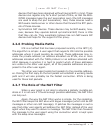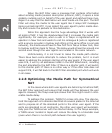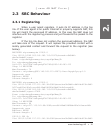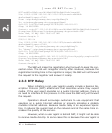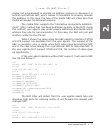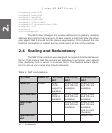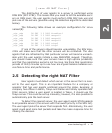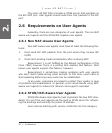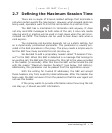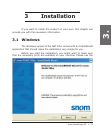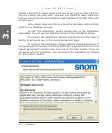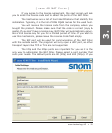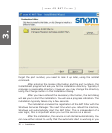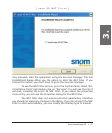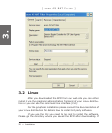
snom technology AG • 21
[ S N O M 4 S N A T F I L T E R ]
2.7 Defining the Maximum Session Time
There are a couple of timeout-related settings that terminate a
call when certain events fire (see below). However, when prepaid cards are
being used, operators want to limit the call duration to a certain time.
The SBC has a mechanism to terminate calls anyway. It does
not only send BYE messages to both sides of the call, it also cuts media
relaying which in practice will be used in most cases when the call is ter
-
minated via PSTN. This feature can be used to tear down calls when a
card expires.
The remaining call duration depends not on a static setting, but
on a dynamically provisioned parameter. This parameter is usually pro
-
vided in the AAA procedure in the proxy. The proxy needs a simple way to
tell the SBC how many seconds this call can stay up.
We decided to add a proprietary header called “P-Session-Time
-
out” to the SBC. When this SBC is detected in a message that belongs to
an existing call, the SBC sets the timeout for this call to the value provided
in the header (in seconds). After this time the SBC will terminate the call
with the reason “Maximum Session Duration” (see below, Call History).
Additionally, this parameter can be passed from the application server.
With the setting for trusted IP addresses, the SBC will accept
these headers only from explicitly listed addresses. After the header has
been used, the SBC removes it from the packet so that the user agent will
not see this header.
If the proxy wants to provide information about how long the call
can stay up, it should use AOC information.
2.



